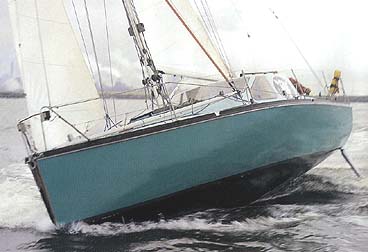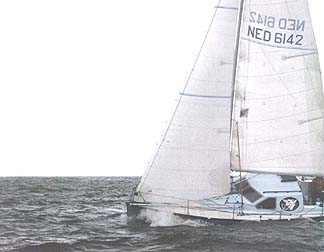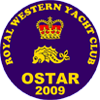Home-built Boosman 30


Winner - 200 myls 'SOLO' - 2001 & 2004
In the early nineties a number of major yacht races had my special interest: The Whitbread, the BOC and ofcourse the OSTAR. Especially the BOC, with hero's like Philipe Jeantot and his revolutionary flying saucers was very imaginative. In that particular Whitbread, a Russian boat named Pepsi Fazisi entered, of which I found a few good fotographs of it's hull shape. A bit of an ugly duck, not as optimised to the IOR rating system as all other boats and plagued by a constant lack of money and preparation time they somehow managed to start and complete a few legs. And when it sailed, it didn't do badly, especially downwind. The more I followed those races and boats, the more I became intrigued by the relationship between hull shape and performance.
Ofcourse I wanted to have a boat for myself, but comparing all suitable boats at the time with my own ideas about optimal hull shapes I quickly found out that there was only one option: DIY. I was still in secondary school and didn't have a penny. So, in 1992, I drew my own linesplan. An overall length of 30 foot, 3 more than my fathers boat, was what I considered the absolute maximum. At every 6 feet more the price of a boat doubles, not even taking into account costs like insurance and berthing. Besides, 30 foot was the maximum size for the smallest class in the OSTAR, even then my ultimate sailing ambition. I wanted a boat that would sail well, especially under adverse and heavy conditions. A maximum draught of about 5 foot 4 because of our shallow home waters, capable of being sailed (rather then motored) into and out of harbours and locks single handedly, have full standing headroom for me (I'm 6 foot 9), but above all a boat that would be 'Bart proof'. Functionallity was my main priority, ranking higher than appearance.
For months on end I worked on my lines plan. On a large, plain sheet of paper, scale 1 to 10 and all by hand, I worked until it was to my comlete satisfaction: ample beam, a smooth, flat bottom for easy planing and minimum wetted surface and maximum length of waterline at 25 degrees of heel. Ultimately, in november 1992, the mark 3 was to my complete satisfaction.
But then it only just started. I was 19 (but only just), had about 500 guilders in my pocket and no suitable place to building place at hand. The back garden was no option. Cycling around, I came across a nearby farm called De Franschman (the frenchman) which, as far as I could see from the roadside, had a large, unused shed. So I went in and plainly asked the farmer if I could build a boat at his place, which, surprisingly, was OK as long as it didn't take more than 3 years, didn't smell and didn't make too much noise. Best of all was that I didn't have to pay anything! The only downside was that I would have to take the boat outside in autumn and winter because during these months the place was occupied by a disassembled beach house.
Starting in May, 1993, I worked on my boat on an almost dayly basis. I started out by clearing the floor, and setting up a web of building frames. Onto those frames I nailed a thin (1/2") shell of red cedar strips, glued to each other. This first shell was then carefully planed sanded and soaked with thin epoxy, and then on the outside covered with several layers of fiberglass. Then, the hull was turned upright and the inside of the hull was covered with a 1" layer of closed cell cross linked PVC foam which forms the main core of the sandwich construction. After that, the inside was sheated with several layers of fiberglass which forms the inner shell.
By then, the second summer holiday started during which I made floors and keelson, a strong structure which carries the loads of keel and mast. I also made all bulkheads, mostly from thin plywood and foam. The third summer, after graduating as mechanical engineer, I made everything else neccessary before a boat can be launched. I worked hard, raising at 7.30 am, starting work at the boat at 8.30 am and worked on until 6 pm. After dinner I went back until dark at about 11 pm. After 3 months at this pace, I was broke and exhausted, but the boat was launched. During these 3 summers, my friend Jaap helped me. 75 years of age and half blind he gave invaluable moral support. The following winter and summer I made engine, electra and interior at a much too slow pace because of a constant and chronical lack of money and time. But following spring I could finally step the mast!
After that, things went quickly. I had a job and with it some income and could finally buy sails and other stuff so I could finally sail. The following years I always tried to make as long a trip during my summer holiday as possible, and, besides that, as many local races as I could. And, considering the boat is built at absolute minimum cost, it still sails well. Up to now it did everything I ever hoped it would and much more, covered 24000 miles on the open sea between 32N and 67N, proved truely indestructible and I still feel proud every time I go to sea!


